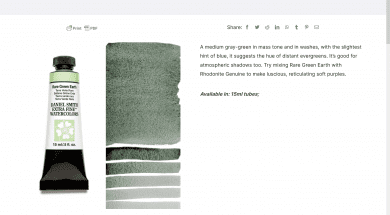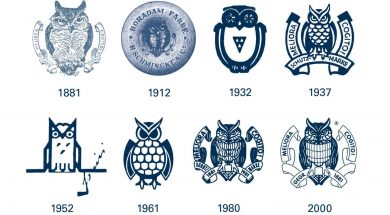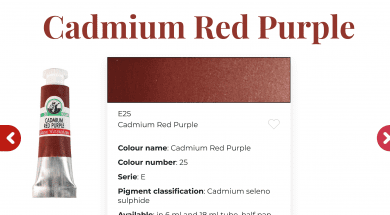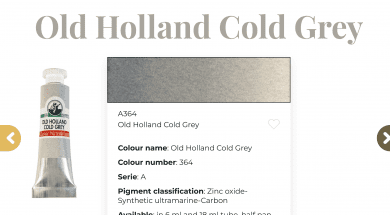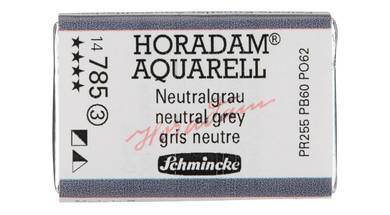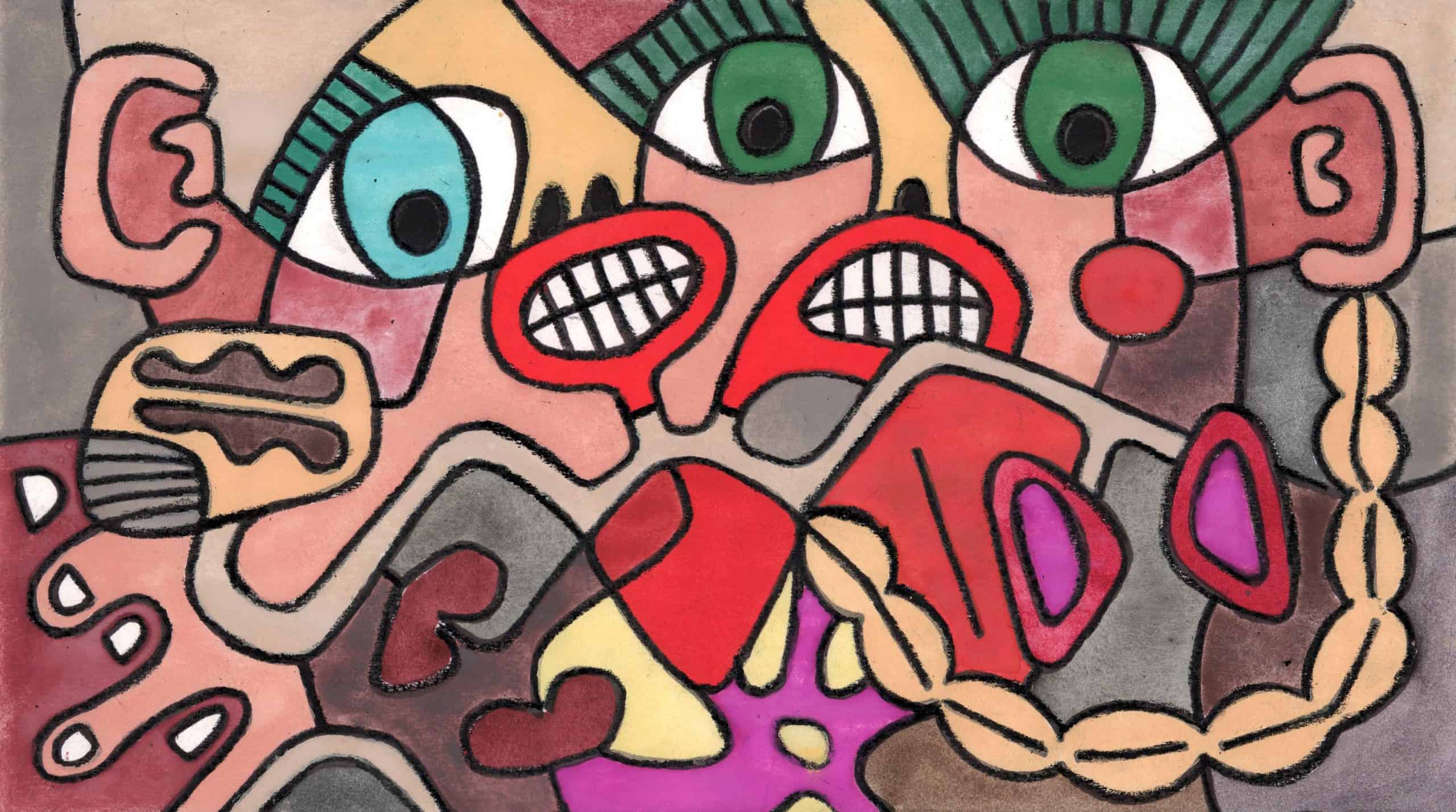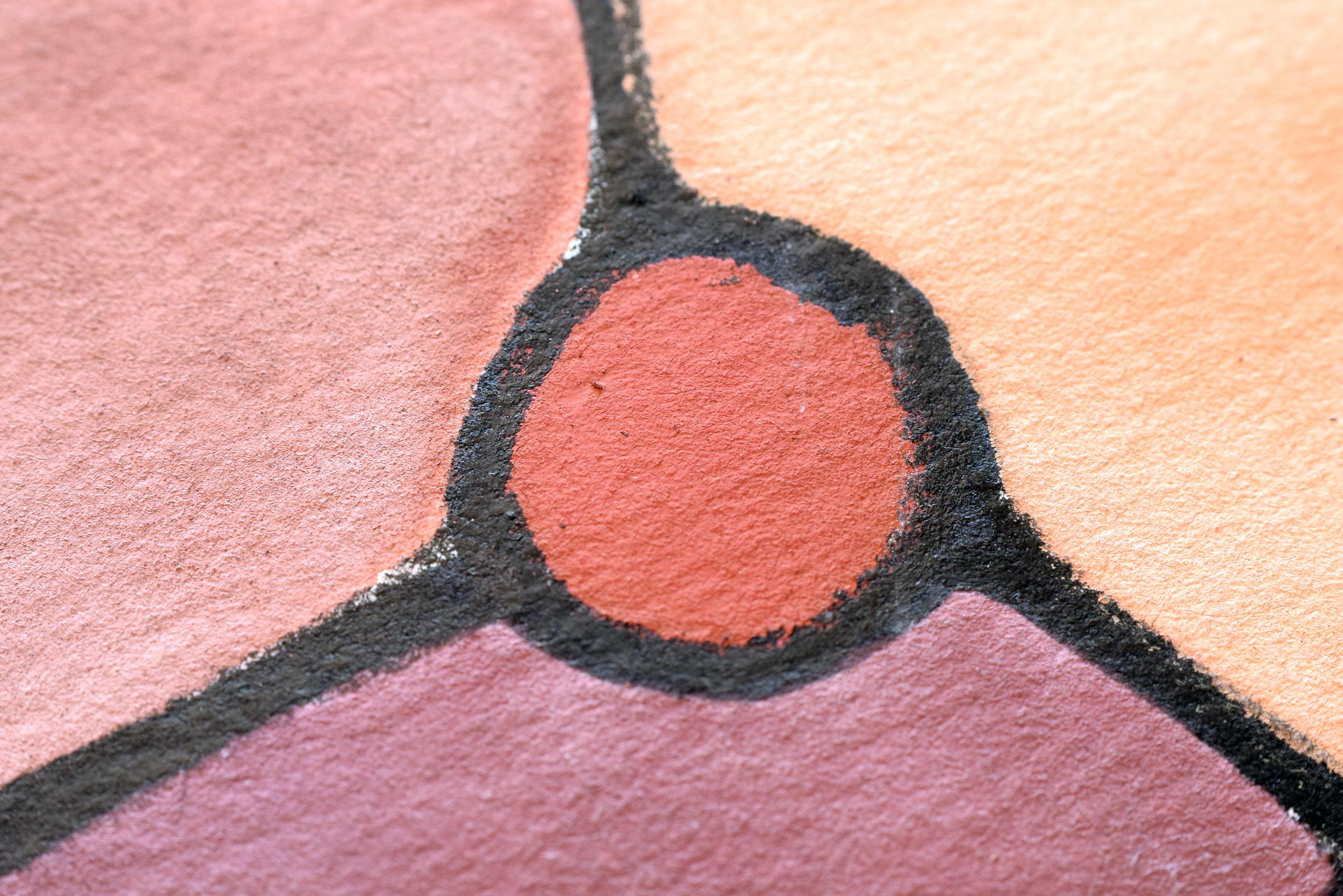
Natural vermillion historical pigment
Of all the colours I have struggled with the most, it is probably orange. The reason is that many of the oranges did not seem natural to me, they are way too saturated, for example Benzimidazolone (PO62, PO64).
First of all, I discovered I didn’t like cadmium orange. I still don’t like cadmium orange. It was too powdery and opaque. So I went looking for other oranges in the range between orange-yellow and orange-red.
Eventually I came across vermillion, but I mean the original natural vermillion, which occurs in naturally occuring cinnabar deposits. This is the same colour ink that those ancient chinese chop seals use.
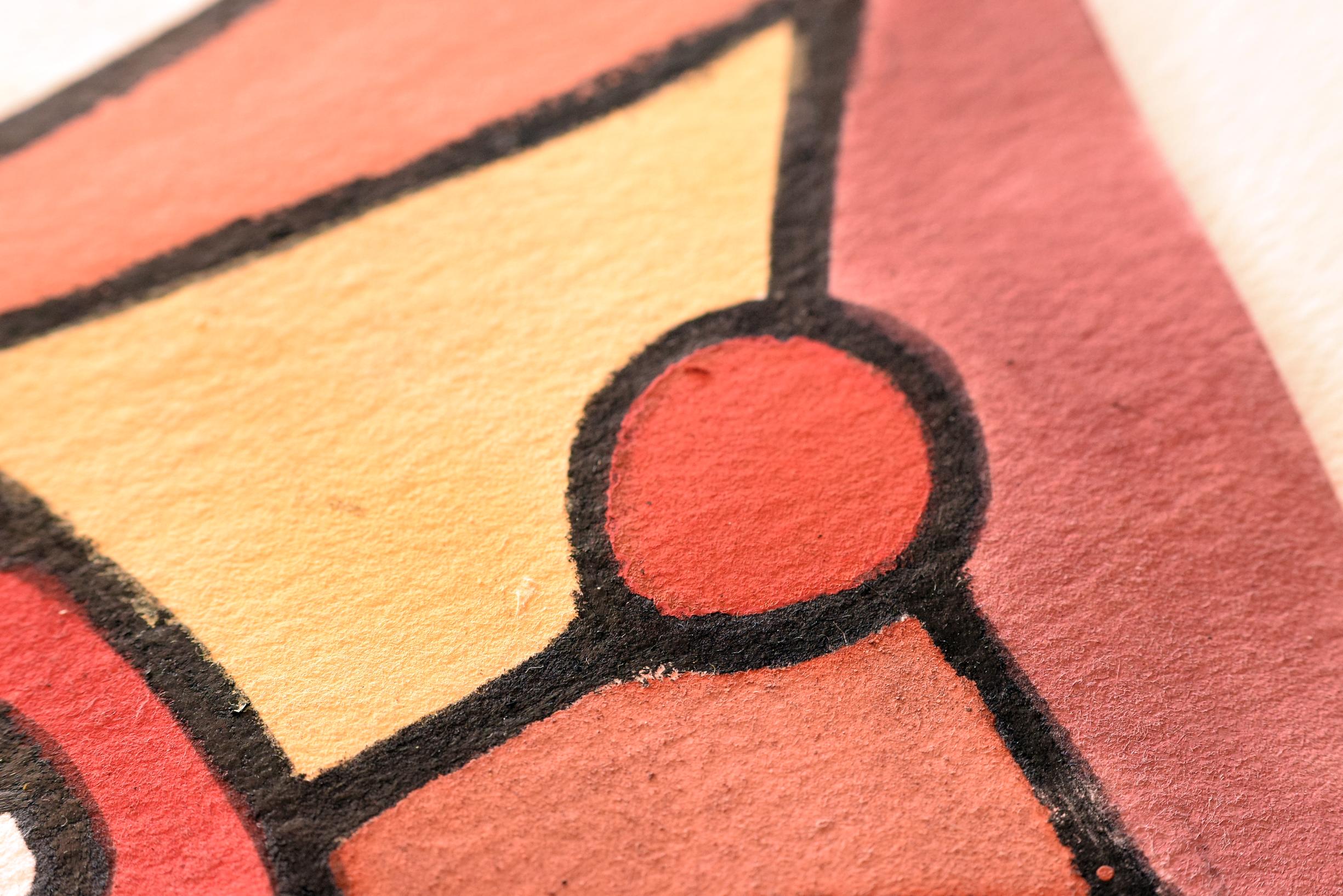
I usually use vermillion colour very sparingly, for example to fill in these circles as shown above.
The trouble is that genuine vermillion is mercuric sulphide, which is of course toxic (probably more toxic than cadmium, lead and cobalt pigments put together!).
Even so, I love the way it looks when it dries. There is nothing else like it. It has this wonderful matt appearance, not shiny. It’s an unusual colour and it’s exciting to use. So I make an exception for vermillion (PR106) and I’ve incorporated it into my forever palette.
I use a special brush dedicated to natural vermillion and I don’t wash it, I just use it for that one purpose. I always wash my hands after using it. And I never eat when I am doing art. After I have applied the vermillion and it has dried, I spray it with Micador fixative so that it doesn’t come off.

